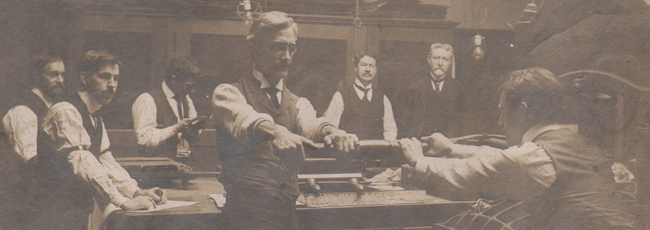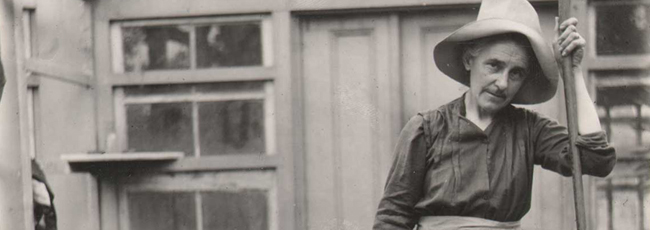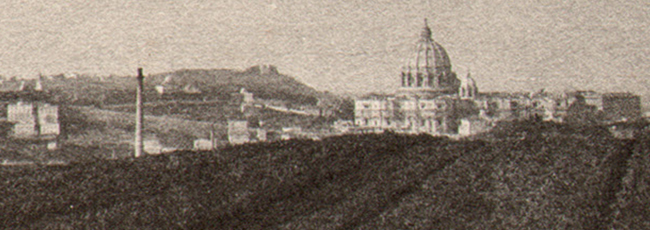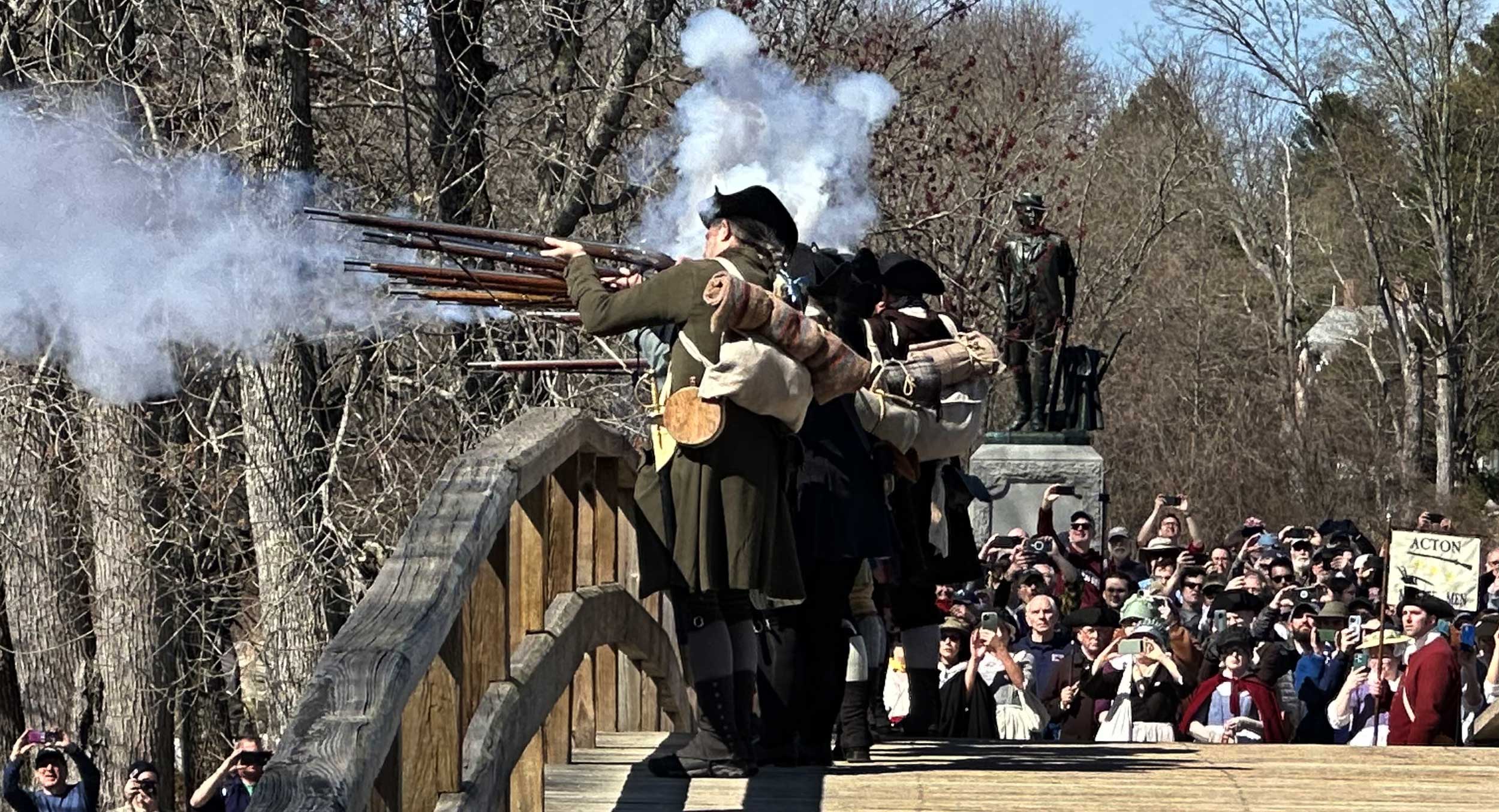
Members of the Acton Minute Men, reenactors in the annual Isaac Davis Trail March, fire a volley over the side of The Old North Bridge in Concord, MA: the start of the American Revolution on April 19, 1775. This year marks the 250 anniversary of what is known as “The Shot Heard Round the World.” David Spencer for PhotoSeed Archive
Concord Hymn
“By the Rude Bridge That
Arched the Flood,
Their Flag to April’s
Breeze Unfurled,
Here Once the Embattled
Farmers Stood,
And Fired the Shot Heard
Round the World.” -Ralph Waldo Emerson 1837
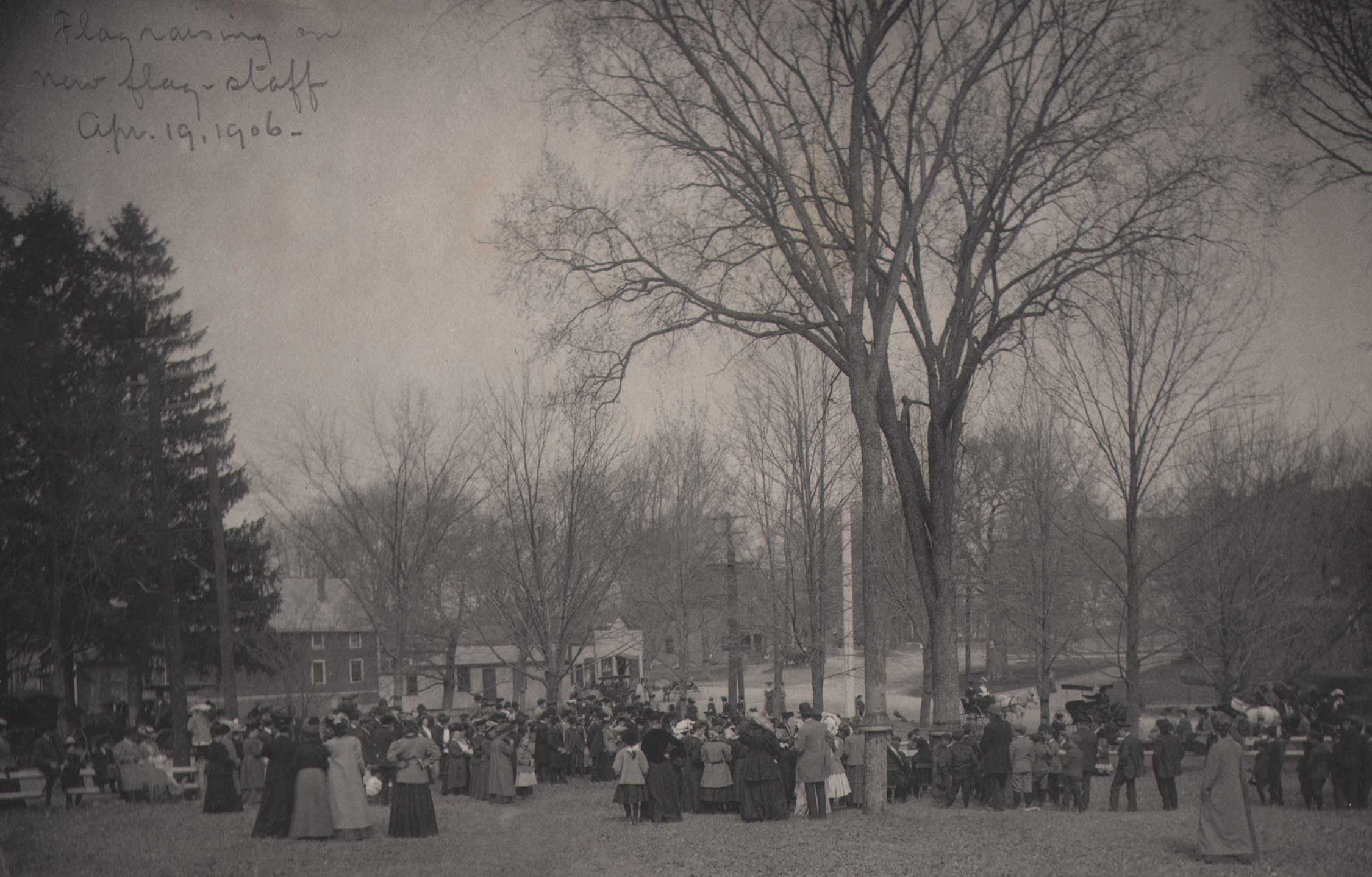
“Flag Raising on New Flag-Staff Apr. 19, 1906”, 1906, album-mounted platinum print, Alfred Wayland Cutting, American 1860-1935, 15.3 x 19.5 | 27.8 x 34.5 cm. On the Wayland, MA town common, residents watch the dedication of a new town flag pole: the date occurring on April 19th, an important date in American history commemorating “The Shot Heard Round the World.” From: PhotoSeed Archive
Bad luck. At least for one distant relation. On official battle cry orders, the second soldier to die on April 19, 1775— the very moment which started the American Revolutionary War—was my direct cousin, private Abner Hosmer, not quite 21 years old, a member of the Acton, MA Minute Men.
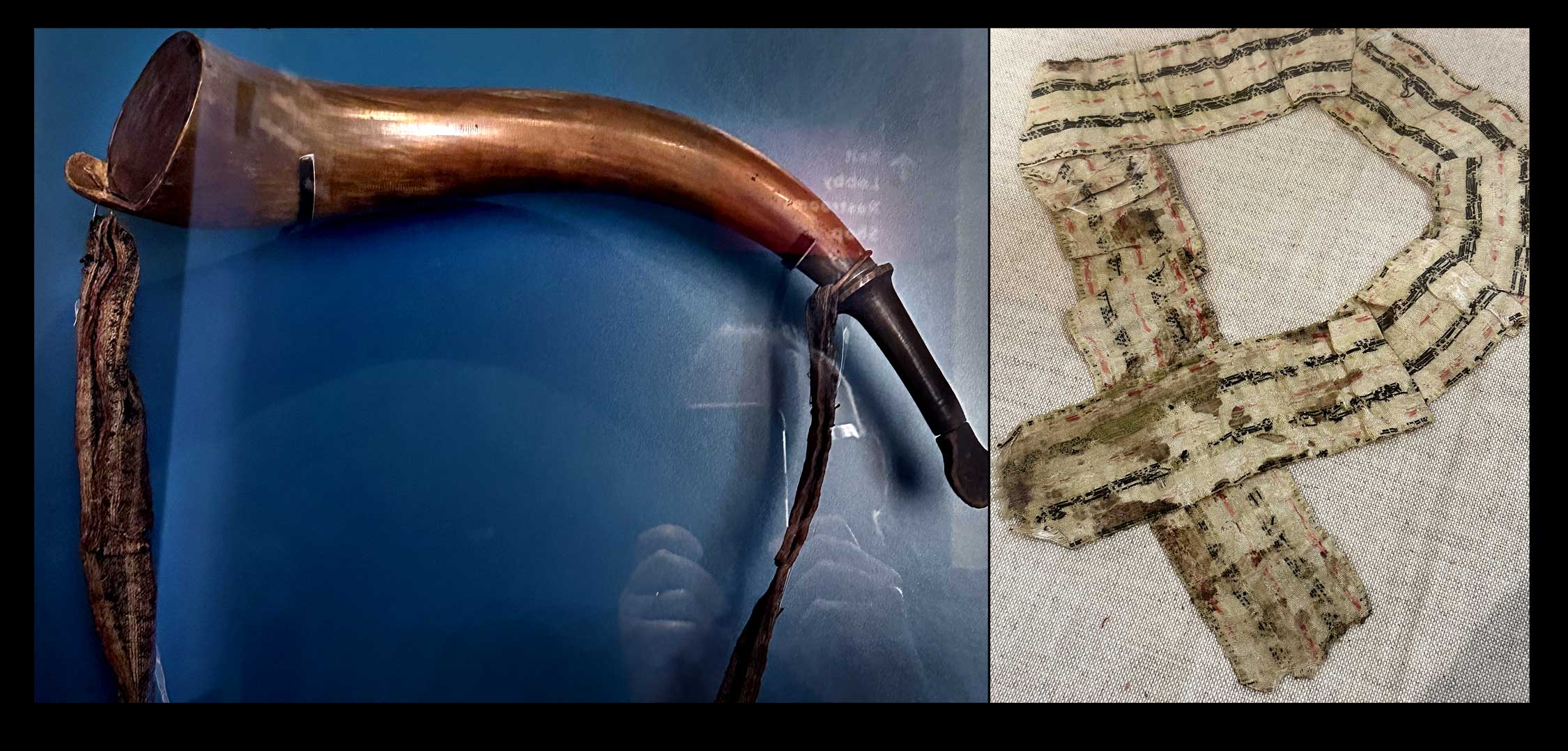
At left, a cow powder horn recovered from the Old North Bridge battle is now a centerpiece of a display on Concord’s role in the American Revolution at the Concord Museum. A descriptive panel states: “Abner Hosmer loaded his musket with gunpowder from this horn at the North Bridge on the morning of April 19, 1775, but was killed before he had a chance to pull the trigger.” Right: this bloodied hatband belonging to Private Abner Hosmer, an Acton Minute Man, was also recovered at the bridge site. It is now on display at the Acton Memorial Library. Abner’s father, Jonathan, in a letter written just ten days earlier, had predicted that if the (British) Regulars turned out, “there will be Bloody work.” Hosmer was a direct descendent of this site owner. David Spencer for PhotoSeed Archive
Today, April 19, 2025, we, now the American nation, pay tribute to his fellow Massachusetts townsfolk—those approximately 400 colonial soldiers who went into battle against 96 British Regulars at the Old North Bridge in Concord, Massachusetts. It was their bravery that began the epic conquest and eventual success to cast off their English king in becoming a new nation and free republic.
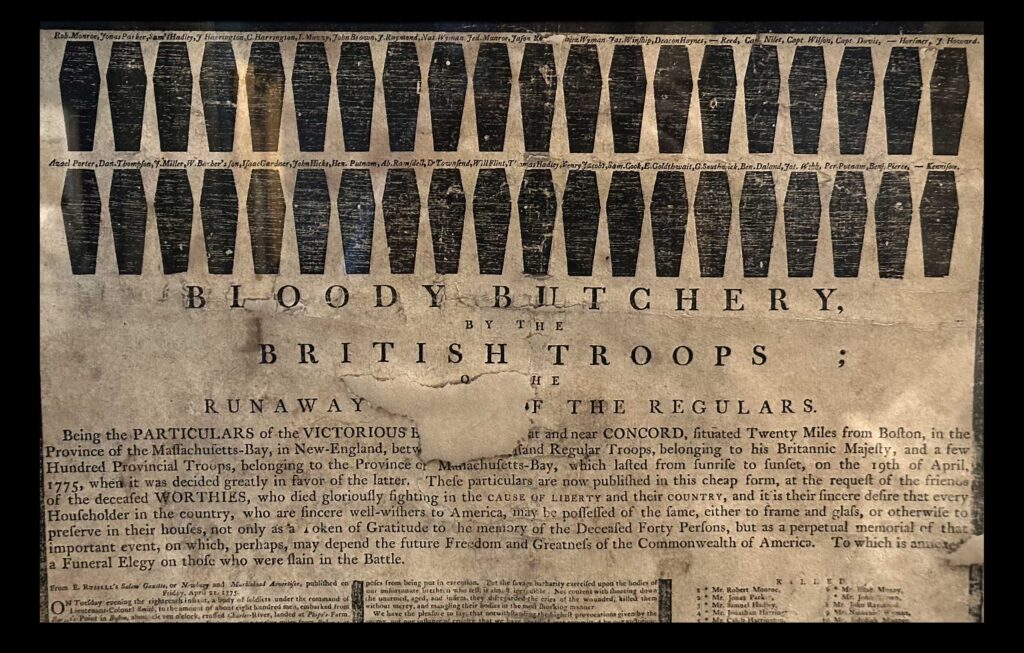
Detail: “Bloody Butchery, by the British Troops”, 40 coffins representing some of the first provincial soldiers killed in fighting against British troops from towns including Concord, Acton, (Captain Isaac Davis, Abner Hosmer and James Hayward) Sudbury, Charlestown, Salem, Woburn, Cambridge, Brookline, Medford, Lynn and Danvers make up the top portion of this broadside. Printed in letterpress by the Essex (MA) Gazette only five days after the April 19, 1775 battle, subsequent editions of the broadsheet added more coffins representing lives lost in the ongoing war. The work is framed and on display at the Concord Museum. David Spencer for PhotoSeed Archive
The last time I visited Concord was in my childhood. The Hosmer line sprouts from my maternal side, and I’m sure my mom was her usual stern yet patient New England self in trying to explain the significance of our ancestor and what happened in this place. But no. I remember the bridge and perhaps a vague memory of someone dressed in a tricorn hat, but that is all that registers now, thinking back. But 50 years forward to the present? A load of difference.
And, as one of those descendants, I will not mince words now. I’m scared for our country and ashamed of what is happening in the name of it. But what I saw in Concord yesterday was downright beautiful.

With permanent Photography not invented yet in 1775, the Concord Museum features a variety of media, including a large 24-hour digital timeline on an expansive battle and route map showing the advance of British troops marching from Boston to Concord. This detail from a 3d diorama of the battle at the Old North Bridge, however old school, is still visceral and gets the point across: casualties on the provincial side. Two British soldiers were also killed at the bridge, their bodies interred nearby. David Spencer for PhotoSeed Archive
In what has become a long-time annual tradition, a group of Acton, MA and other local town residents gather and march behind the Minute Men bearing that old town’s name: the annual Isaac Davis Trail March. The Acton group are American Revolutionary War reenactors who celebrate that fateful day by marching at dawn nearly seven miles to the Old North Bridge in Concord. They are led by a gentleman playing the role of Captain Isaac Davis, “the leader of the Acton Minute Company who sounded the alarm shots to rally his men to come to his house and prepare to head off for Concord,” according to the company’s website.
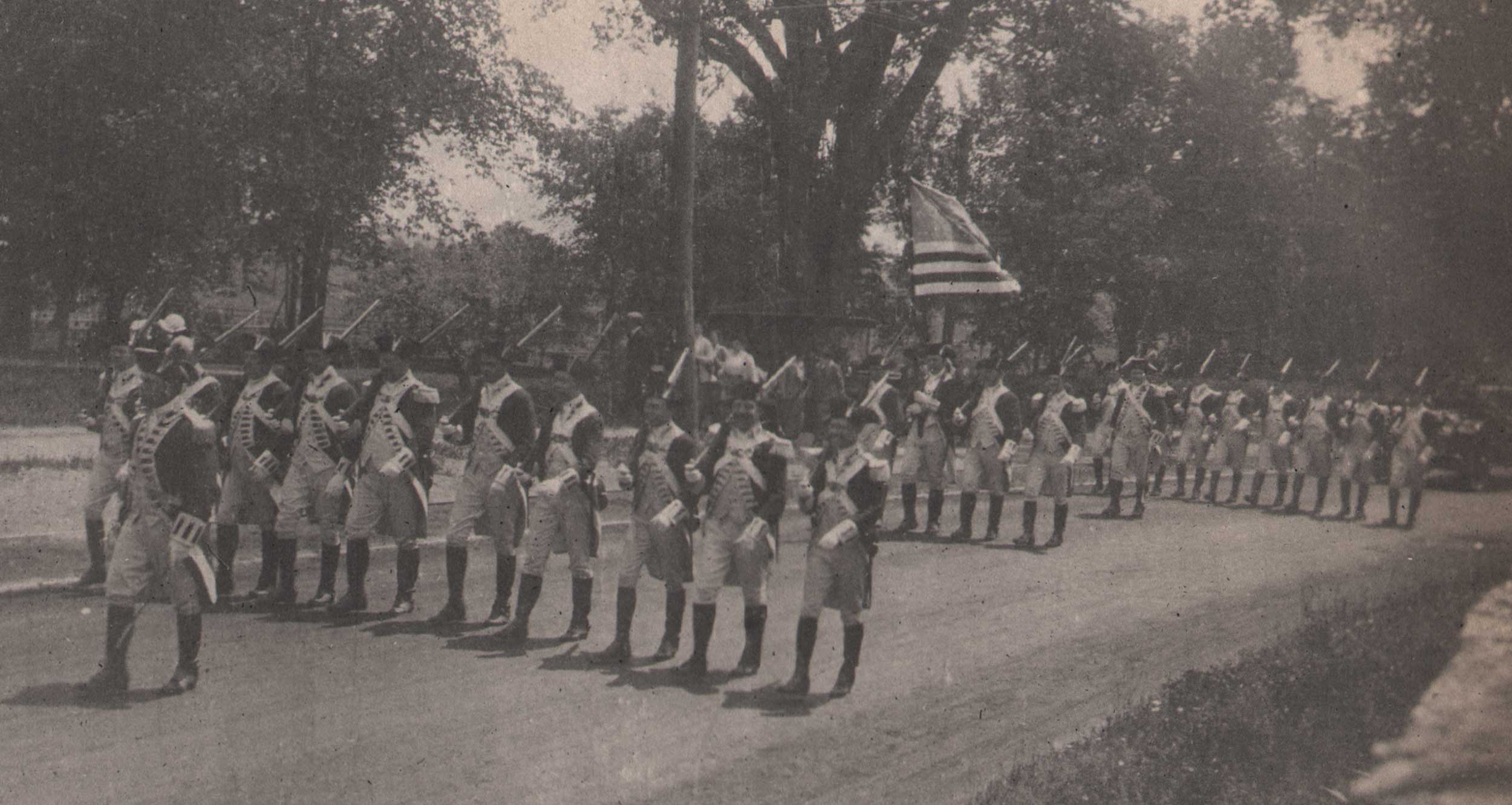
“American Revolutionary War Reenactors: Wayland, MA”, 1906, album-mounted platinum print, Alfred Wayland Cutting, American 1860-1935, 14.2 x 19.0 | 27.8 x 34.5 cm. Pride and patriotism are on display as three columns of troops parade off the town common in Wayland, MA: perhaps on the July 4th holiday. An automobile can be seen making up the rear. From: PhotoSeed Archive
This year, due to events surrounding Concord’s direct 250th anniversary role in “The Shot Heard Round the World,” and the massive amount of people expected on town streets, many of which will be closed due to a parade and other Patriot Day Weekend events, the Acton company made the decision to do the trail march a day early.
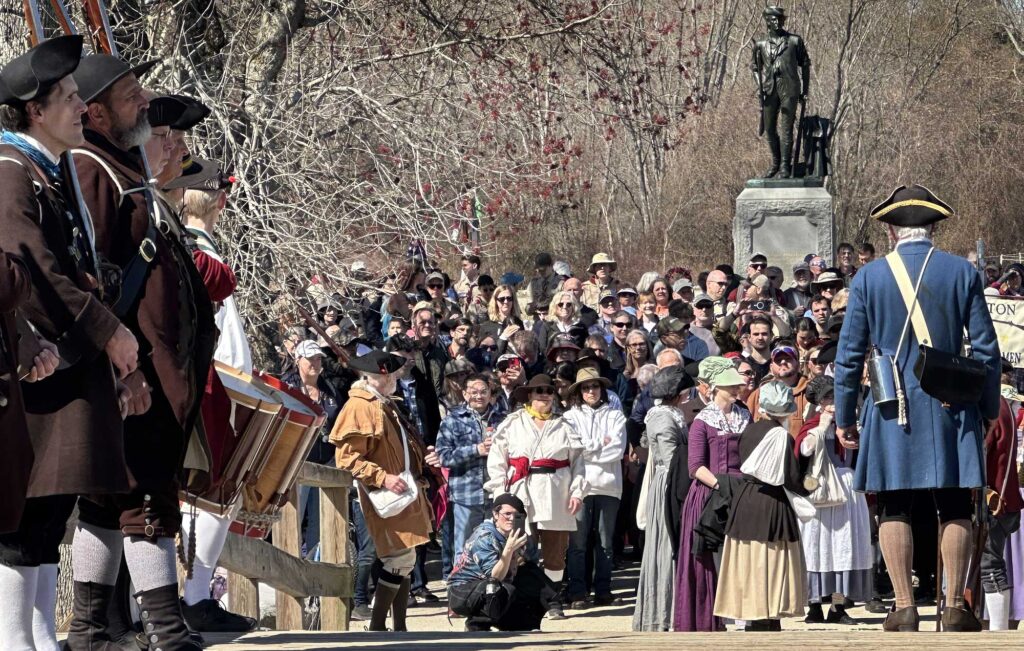
Overlooking from the rear at the conclusion of the April 19th Issac Davis Trail March at Concord’s Old North Bridge is the iconic Minute Man bronze statue depicting Davis by American sculptor Daniel Chester French. The large group that marched behind the Acton Minute Men look on at center as they are thanked for their nearly seven mile journey. The sculpture was unveiled for the Centennial of the battle on April 19, 1875. My aunt Jane described the work in 2009: “By definition, a minuteman can be ready to fight “in a minute”: he hears the alarm, grabs his musket from the farmhouse wall, and leaves his farm chores for battle. This statue can be Abner, in our imagination, or any other soldier in the Revolution, standing with his left foot forward, his right foot poised to take a step while holding his musket on his right hip. He wears simple, everyday clothes, and boots, and a hat with a jaunty, upturned brim, and he gazes straight ahead.” David Spencer for PhotoSeed Archive
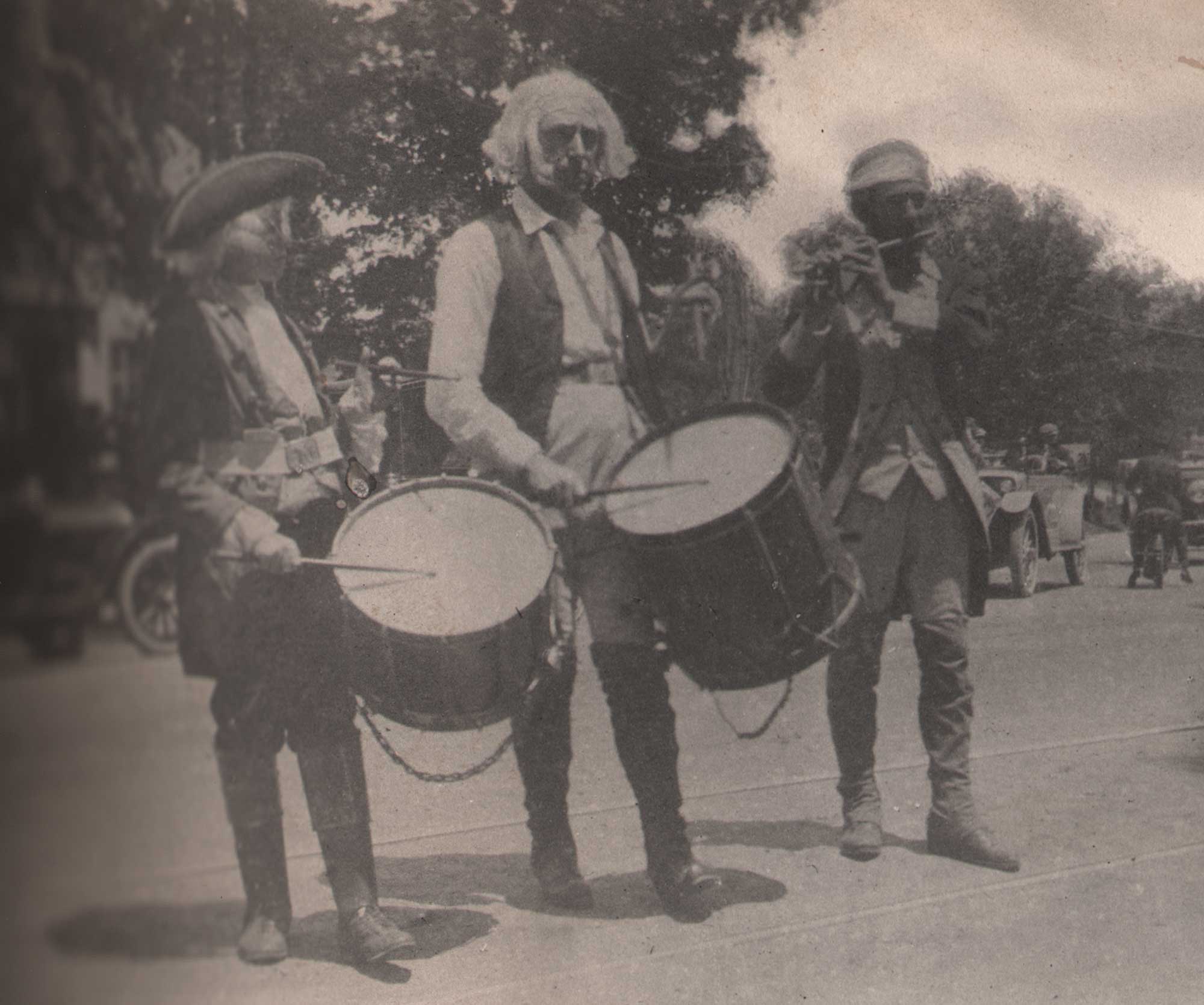
“Two Drummers & Fifer: Wayland, MA”, 1906, album-mounted platinum print, Alfred Wayland Cutting, American 1860-1935, 13.2 x 14.0 | 27.8 x 34.5 cm. Pride and patriotism are on display as two drummers and a fifer keep the past alive- perhaps with a spirited rendition of The White Cockade March, on the Wayland town common. Fifteen-year-old Luther Blanchard was the name of the fifer that day, and is reported to have been the first to be grazed by a bullet on his side by a British Regular: the “First Shot?” The gathering was perhaps part of the town’s July 4th holiday. From: PhotoSeed Archive
So let me end with this, while getting back to that “beautiful” statement thing I mentioned a few lines ago. The 100 or so townsfolk following along yesterday—to my eye—were from all walks of life, nationalities and genders, along with a Boy Scout troop thrown in for good measure. Basically, the American Melting Pot, in real life, practicing their Constitutionally-protected right to assemble while keeping in marching step to the flute and drummer ahead of them playing a spirited rendition of the White Cockade, the traditional Scottish folk song. And, as luck would have it, at the conclusion of several musket volleys over the Old North Bridge, I ran into a fellow Hosmer descendant from another line of the family. A hug for both of us, and not bad luck at all 250 years later.

